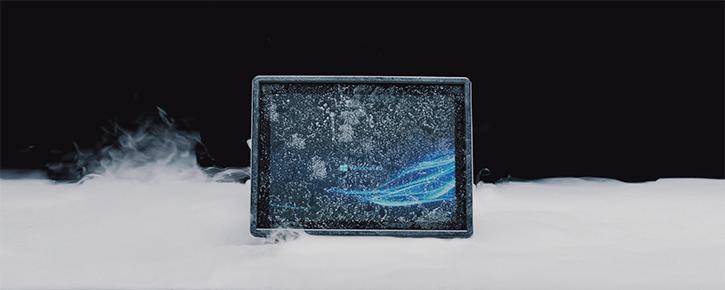
Why rugged IT is a must for cold storage use
Cold chain management is all about making sure the products always keep the right temperature. For operations to run smoothly in cold storage facilities, different types of IT devices are needed. But what happens to them when they’re subjected to low temperatures? In this blog post, we find out.
All eyes on cold chain management
Cold chain is a logistics management process for products that need to be kept at low temperatures – from site of production to final destination. Recently, cold chain management has been much talked about, as the different COVID-19 vaccines require very cold temperatures throughout the entire product lifecycle. The current situation highlights many of the cold chain challenges, and some regard this as an inflection point that will determine how cold chains are handled on a global scale for the coming decades.
For COVID-19 vaccines, the problems mainly revolve around transportation. But fabrication and storage are also challenging for many companies that deal with cold chain management, especially when it comes to IT – which is where our rugged devices come into play.
Why consumer devices are not an option for cold environments
In cold storage facilities, IT devices are mainly used for order picking, inventory, maintenance and quality control purposes. Computers are typically vehicle mounted and tablets or scanners are oftentimes handheld. Such devices, however, need to be engineered for the environment they’re intended to operate in.
For regular computers and other consumer gadgets, the lowest operating temperate is usually 32°F or 0°C. In colder environments, the behavior of electronic components changes. Batteries will, for example, not perform as well and discharge faster in cold temperatures.
In a cold environment, screens will frost up making it difficult to read what’s on them. Frost can also cover camera and scanner ports. Moving back and forth between cold and dry areas causes condensation which, apart from making reading and scanning difficult, can also cause internal components to corrode or short-circuit. Typically, moisture will enter the devices via I/O ports and other connection points.
As for connectivity, radio waves don’t operate in the same way in a cold environment, reducing their range. In cold storage facilities walls are usually thick and insulated, which also affects the radio wave penetration negatively.
Consumer devices are not designed to be used with gloves. For operators, who need to wear thick gloves in cold storage facilities, using a touchscreen or a keyboard is therefore difficult, and mistakes are easily made.
Rugged IT from JLT, designed to withstand cold temperatures
And then there’s rugged IT.
For such devices, batteries can be specially designed for use in cold environments, releasing charge at a slower pace than most standard battery models. Allowing work to continue without the device having to be repeatedly charged during a shift.
Internal heaters can prevent frost and condensation from forming, and external protectors that prevent cold and moisture from entering can also be attached to the devices. For example, the JLT1214N vehicle mount computers with heater keeps the display and touchscreen free from ice and moisture, guaranteeing trouble-free operation even when going in and out of a freezer storage.
To facilitate gloved operation, rugged keyboards or virtual keypads with larger keys can be used. Both our standard JLT6012 and JLT1214P computers have a glass touchscreen that can be used with gloves and is easy to wipe off and keep clean from ice and moisture. The temperature spec even guarantees full functionality all the way down to minus 30°C.
For better connectivity, external antennas can be added or, if connection inside the cold storage is lost or unavailable, third-party solutions that allow for session persistence can be installed. That way, data can be entered and stored without a connection, and then updated as soon as the device regains signal.
With origins in Northern Europe, where winter conditions are harsh, JLT knows cold. In fact, our first devices were made for the logging and mining industries in the great wintry outdoors, some 20 years ago. We therefore naturally provide rugged computers with feature sets configured especially for cold storage logistics. That way, our customers can focus on getting the job done as functionality and business continuity are not compromised by environmental factors. Get in touch if you’d like to find out more.
Want to learn more?
We’re here to help and advise you on every aspect of rugged devices and industry data communications.
Please fill in the form and we will get back to you as soon as possible.
